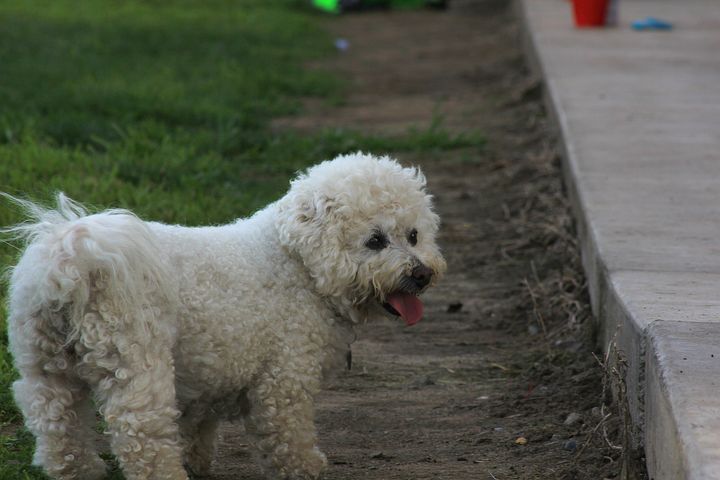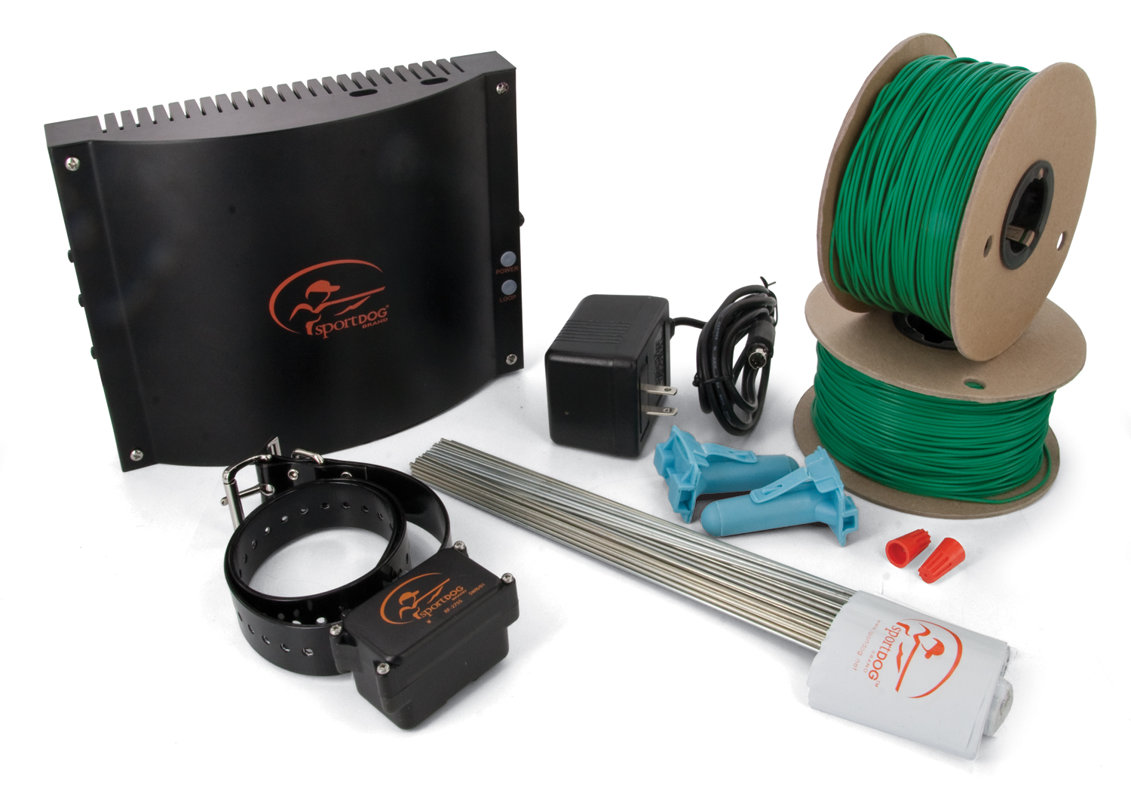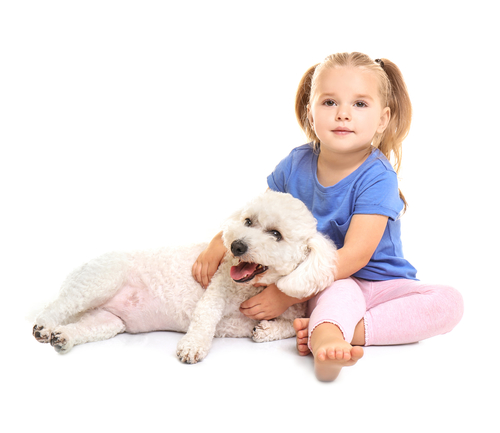Blind dog accessories and equipment can help both you and your dog adjust to your dog’s blindness, and they can help your dog live a more normal life.
While you may be devastated to learn that your dog is blind, it’s important to keep in mind that your dog will adjust to the news, much better than you.
Babying and pampering your dog is a bad idea. Your dog will become very dependent, and it will be a burden for you. You will end up resenting your dog, even though you think you are just being kind.

The best approach is to help your dog be as independent as possible, living a life as close to normal for a dog, as possible.
Your dog needs your support, not your pity. In the end, this is best for both you and your dog. And you both will end up being happier!
You may have to search a bit to find products that meet your needs, but I think I can help.
Based on my background as an occupational therapist, I’ve gathered information on products that I think are helpful and worthwhile. I’ll share what I’ve learned and explain why I think each product has merit.
Keep in mind that your dog’s most important sense is smell and his second most important sense is hearing. After that comes sight. So this gives us some clues on how to work with our blind dogs…
Navigation or Getting Around
It is heart breaking to see your beloved pet bumping into furniture and walls. You’ll need to work with your dog to help her map out familiar places in her mind. And teach her how to get around without bumping into things and getting hurt.
Navigation, or learning to get around the house and yard, is one of your dog’s most important challenges. You will have to help him with this, until he gets it and understands how to do it.
Muffin’s Halo Guide for Blind Dogs

While there are a couple of halo designs available, I like this one best because it does not inhibit your dog’s eating or playing with toys.
At the same time, the halo gives your blind dog a warning, several inches before he walks into something.
The Halo is a great training tool for a dog who is newly blind.
Remember how dogs learn – Pavlov’s rule? They will quickly understand that the halo is warning them that bumping into something will follow soon.
Use Scent for Navigation Cues
Since scent is your dog’s strongest sense, you can use this to your advantage. By placing a scent in strategic locations, you can help your dog orient himself and map out his territory in his head.

Most importantly, you need to be consistent. Write down your scents and locations, and stick to your plan. For example, you might use cinnamon essential oil on the first and last step of your stairs. This would give your dog a heads up that he is approaching or coming to the top of the stairs.
Use another scent on the frames of doorways at the height of your dog’s nose. Or use calming lavender to highlight your dog’s bed.
Be creative. You don’t want to have too many competing scents, but you do want to mark all the important areas for your dog.
Essential oils are a good choice for scent marking because they linger for a week or two. You won’t have to replace them often.
However, a word of caution. Essential oils are very potent and very concentrated, and you should use only a drop or two at a time. They are used medicinally. You don’t want your dog to lick them, as they can do harm.
You can get an assortment of therapeutic grade essential oils for calming here at Amazon.
Jenny Leash and Dog Vest
A short traffic leash is a simple but very useful device when your dog is going blind or has become blind.
It is a shorter version of a well-constructed leash that gives you better control of your dog and helps your dog feel more secure.

Use this leash when you are working with your dog initially, to help her learn her way around the house and yard. Use it to guide her up your stairway. And use it when you take walks, until your dog becomes confident on a regular leash again.
The shorter leash will help your dog know that you are close and there to help him move from place to place safely.
I suggest that you use a short leash with a vest or harness, even if your dog is used to walking on a leash with a collar. The vest or harness is another layer of security for your dog.
And, I really recommend one that tells others that your dog is blind. This should prevent people from rushing up to him to pet him, startling your dog and perhaps causing a problem. Dogs who are blind can react in fear or with aggression if they are surprised and frightened.
Pet Ramp to Access Familiar Places

A dog who loses her sight still wants to be with you and to feel and smell familiar surroundings.
So, if your dog is used to spending time with you on the couch, why not provide her with a ramp to help her climb up, on her own?
She won’t be able to jump up any more, because dogs do use their sense of sight to calculate and measure the distance for jumping.
A ramp can also help your dog get up onto a bed or get into a car on her own. Just like people, dogs like to be able to do things independently.
Make sure you position the ramp parallel to the sofa or bed for safety or purchase one with a lip on each side to prevent your dog from walking off the side of it.
In addition, the ramp should have an easy grip, nonskid surface to give your dog a good firm grip, without slipping.
When the ramp is new, practice having your dog walk up and down the ramp. Use a short leash and a harness to guide your dog when you are working with her on the ramp. This will give her a feeling of security and help her be more confident.
A ramp is better than steps for your blind dog.
Blind Dog Accessories to Prevent Lost Dogs
Years ago I was dog sitting my parents’ blind dog Lucky. She wandered away from my home. I lived in the country, at the edge of a state forest.
Since my mother played the organ and I had one also, I played the organ as loud as it would go—hoping that it would help her come back to our home. In this case, it didn’t work.
Three days later I got a phone call telling me that a neighbor two miles away had found her and kept Lucky in their basement. I was fortunate that she didn’t die of exposure, as it was winter in Pennsylvania.
Blind dogs can easily get lost. It is important that you take a few precautions to prevent your dog from wandering and to help someone take her home if she does get lost.
Electric Fence

An electric fence system can help you keep your dog in your yard. Just as with a sighted dog, you will have to train your dog to know how far she can go.
Use mulch, sand or gravel to mark the electric wires and alert your dog that she is approaching the boundaries.
You can add the mulch or gravel where the flags would be placed, if you already have an electric fence.
Then you will have to re-teach your dog about her boundaries.
The system pictured above also has a remote training collar included. Instead of using flags to teach your dog the boundaries, you can train her using vibration or small shocks. Simply adjust the amount of stimulation to match your dog’s temperament.
This system is often used to train hunting dogs in the field. You would be using a proven technology to train your blind dog to stay in her yard.
Smart Collar with GPS

If an electric fence system is not your choice, you might want to consider a dog smart collar with a GPS system. The GPS system will tell you exactly where your dog is, at any time.
GPS stands for Global Positioning System and it is the system used by the military, boats and ships and airplanes to determine location.
With this collar, you can locate your lost dog quickly, before she gets into trouble like traffic or wandering into a pond or other body of water.
The collar requires a monthly subscription service ($6.95/month at this time). These services are provided:
- Alert you if your dog leaves a safe area that you designate
- Give you a customized report about your dog’s activities (especially good if you have to spend time away each day)
- Provide temperature alerts, hot or cold
- Has a remote that can be used for training
- LED light to locate your dog at night
The Smart Collar is designed to be used with dogs that are over 10 lb.
Pet ID Tags
Make sure your dog has ID tags with contact information for you. At the very least, someone who finds your lost dog could call you to let you know.
Calming Aid for Anxiety
One last suggestion that I’d make is to get a calming aid for your dog, especially if she was suddenly blinded.
Becoming blind can be very confusing and frustrating to a dog who used to be able to see. When your dog bumps into things, she can get hurt but it also is upsetting and can make even a calm dog anxious.
You may find that giving your dog a supplement to help keep her frustrations under control, will be to your advantage.
Zesty Paws Stress and Anxiety Calming Chews have a good track record and are a good choice. Your dog may not need them forever, but they can certainly help you get through a rough patch when you are both feeling stressed.
ng Blind?




Leave a Reply